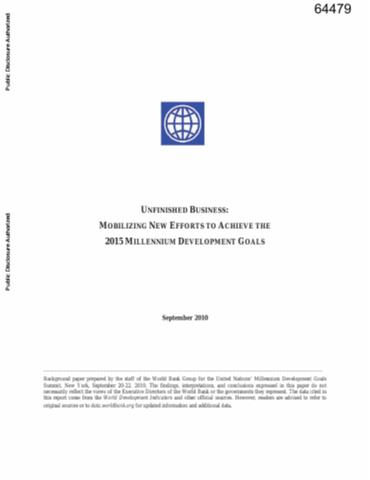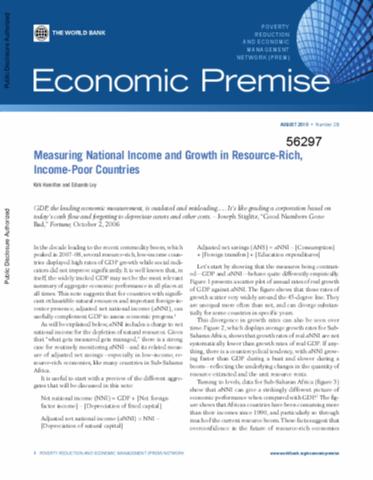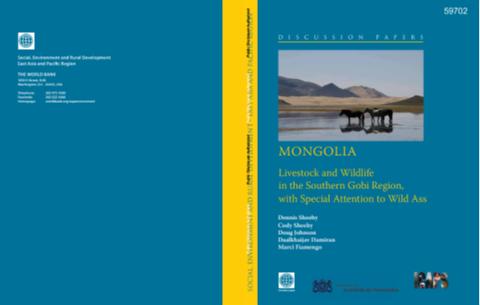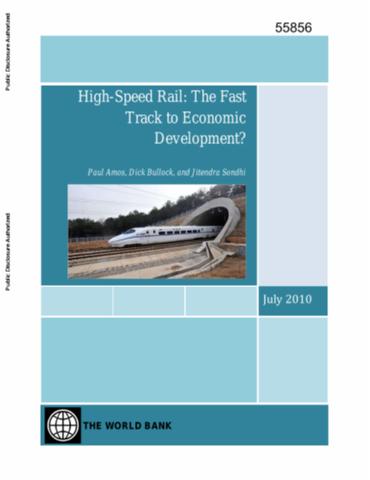The World Bank is a vital source of financial and technical assistance to developing countries around the world. We are not a bank in the ordinary sense but a unique partnership to reduce poverty and support development. The World Bank Group has two ambitious goals: End extreme poverty within a generation and boost shared prosperity.
- To end extreme poverty, the Bank's goal is to decrease the percentage of people living on less than $1.25 a day to no more than 3% by 2030.
- To promote shared prosperity, the goal is to promote income growth of the bottom 40% of the population in each country.
The World Bank Group comprises five institutions managed by their member countries.
The World Bank Group and Land: Working to protect the rights of existing land users and to help secure benefits for smallholder farmers
The World Bank (IBRD and IDA) interacts primarily with governments to increase agricultural productivity, strengthen land tenure policies and improve land governance. More than 90% of the World Bank’s agriculture portfolio focuses on the productivity and access to markets by small holder farmers. Ten percent of our projects focus on the governance of land tenure.
Similarly, investments by the International Finance Corporation (IFC), the World Bank Group’s private sector arm, including those in larger scale enterprises, overwhelmingly support smallholder farmers through improved access to finance, inputs and markets, and as direct suppliers. IFC invests in environmentally and socially sustainable private enterprises in all parts of the value chain (inputs such as irrigation and fertilizers, primary production, processing, transport and storage, traders, and risk management facilities including weather/crop insurance, warehouse financing, etc
For more information, visit the World Bank Group and land and food security (https://www.worldbank.org/en/topic/agriculture/brief/land-and-food-security1
Resources
Displaying 4656 - 4660 of 4906Unfinished Business
Backed by sound economic policies and until the global crisis, a buoyant global economy, many developing countries made significant movement toward achieving the 2015millennium Development Goals (MDGs), particularly those for poverty reduction, gender parity in education, and reliable access to safe water. But even before the global economic crisis, progress in achieving some MDGs, especially those on child and maternal mortality, primary school completion, hunger, and sanitation, was lagging. The global food, fuel and economic crises have set back progress to the MDGs.
Measuring National Income and Growth in Resource-Rich, Income-Poor Countries
In the decade leading to the recent commodity boom, which peaked in 2007-08, several resource-rich, low-income countries displayed high rates of gross domestic product (GDP) growth while social indicators did not improve significantly. It is well known that, in itself, the widely tracked GDP may not be the most relevant summary of aggregate economic performance in all places at all times.
Mongolia
The purpose of this report is to examine development trends in the Southern Gobi Region (SGR) as they affect livestock and wildlife. It provides an overview of the environment and natural resources of the region, discusses existing relationships and interactions among humans, livestock, large herbivore wildlife, and the natural resources on which they are dependent. It then explores the impact that economic development of the region is likely to have if that development does not consider the needs of the current users.
Perspectivas para os Pólos de Crescimento em Moçambique
O objectivo deste estudo é assistir o Governo de Moçambique na concepção e implementação de estratégias de pólos de crescimento em sub-regiões seleccionadas, com base em programas correntes e propostos e em experiências internacionais. O estudo centra-se em sub-regiões situadas nos três principais corredores de desenvolvimento: Beira, Maputo e Nacala.
High-Speed Rail
A high-speed rail service can deliver competitive advantage over airlines for journeys of up to about 3 hours or 750 km, particularly between city pairs where airports are located far from city centres. One suitable type of corridor is that which connects two large cities 250-500 km apart. But another promising situation is a longer corridor that has very large urban centres located, say, every 150-300 km apart. On these longer corridors, typical of some being built in China, high-speed rail has the ability to serve multiple city-pairs, both direct and overlapping.










